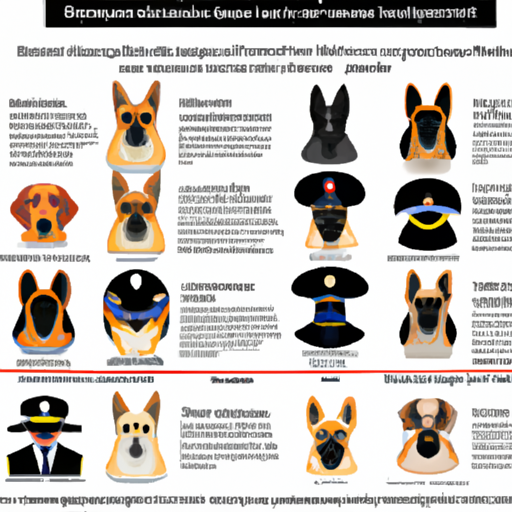When you think of law enforcement, what comes to mind? Uniformed officers, marked cars, and law enforcement agencies, right? But there’s another equally important part of this law enforcement system: Police dogs. These four-legged officers play a crucial role in various police operations, from search and rescue missions to detecting drugs and explosives. This article will delve into the world of police dogs, examining their breeds, roles, and the rigorous training they undergo.
Table of Contents
- Meet the Police Dogs
- The Roles of a Police Dog
- The Training Process
- Frequently Asked Questions
Key Takeaways
- Certain dog breeds are more suited to police work.
- Police dogs are versatile, performing a variety of roles.
- Training for police dogs is rigorous and ongoing.
Meet the Police Dogs
The world of police dogs is as diverse as it is fascinating. While many breeds can be trained as police dogs, certain breeds are especially suited to the task due to their intelligence, strength, and keen senses. The most commonly used breeds in police work are the German Shepherd, Belgian Malinois, Labrador Retriever, Bloodhound, and Dutch Shepherd.
According to OneTopDog, these breeds are chosen for their specific traits that make them exceptional at particular tasks. For example, the German Shepherd is known for its intelligence and versatility, making it suitable for various roles from search and rescue to suspect apprehension. On the other hand, the Bloodhound, with its exceptional sense of smell, is often used for tracking.
The Roles of a Police Dog
When it comes to police work, dogs are not just one-trick ponies. They are trained to perform a variety of roles, each requiring unique skills and characteristics. The main roles of a police dog include:
- Patrol Dogs: These dogs are trained to chase and hold suspects until officers can apprehend them. They are also trained in search and rescue, crowd control, and tracking.
- Detection Dogs: These dogs are trained to detect substances like drugs, explosives, and even digital devices. Their keen sense of smell makes them invaluable in these roles.
- Search and Rescue Dogs: These dogs are trained to find missing persons in various environments, from urban settings to wilderness areas.
To learn more about the various roles of police dogs, you can visit this link.
The Training Process
The training process of a police dog is rigorous and ongoing. Initially, puppies destined to be police dogs are selected based on their breed and certain personality traits. They then undergo basic obedience training, followed by specialized training based on their future roles. This training can take several months to a year and is usually conducted by professional dog trainers.
OneTopDog provides more in-depth insights into the training process of police dogs. They also offer some interesting articles about police dog competitions that showcase the skills and abilities of these incredible animals.
Frequently Asked Questions
-
What breeds are used as police dogs?
German Shepherds, Belgian Malinois, Labrador Retrievers, Bloodhounds, and Dutch Shepherds are the most common breeds used in police work. -
What are the roles of a police dog?
Police dogs are versatile and can perform several roles, including patrol, detection, and search and rescue. -
How are police dogs trained?
Police dogs undergo rigorous training that includes basic obedience training and specialized training for their specific roles. This training can take several months to a year.
In conclusion, police dogs are an integral part of the law enforcement system. They perform a variety of roles and undergo rigorous training to become the best at what they do. Their dedication, loyalty, and skills make them truly remarkable creatures and valuable assets to the police force.



